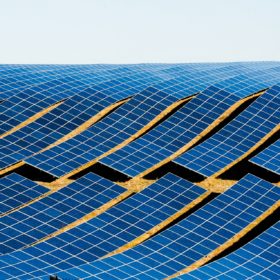
A UK-German research team analyzed solar auctions in India between 2014 and 2017 and has determined that local content requirements have driven up PV costs by an average of 6% per kilowatt-hour.
Scientists from the University of Cambridge and Germany’s Fraunhofer Institute for Systems and Innovation Research ISI have studied the costs of local content requirements (LCR) in 28 solar energy auctions held by the Indian authorities between 2014 and 2017.
“Using the cost estimates from the auction, we compute the additional cost of Indian modules (versus international modules) and the entire cost of the program to the Indian government,” they said.
The auctions were all held under the second phase of the Jawaharlal Nehru National Solar Mission. Unlike the program’s first phase, the second stage included binding LCRs for the first time. The two procurement rounds ultimately awarded 6.5 GW of solar capacity to developers.
The researchers found that solar panels procured under LCRs throughout the 2014-17 period were about 14% more expensive than imported PV modules. This resulted in a cost increase of around 6% per kilowatt-hour.
“This additional cost adds up to between $69 million and $88 million per installed gigawatt of solar PV under the LCR policy,” the scientists explained.
They also sought to understand whether projects selected in auctions with LCRs had a lower realization rate than those selected in procurement exercises without LCRs. However, they found that they have almost the same rate, with no particular delays being reported for projects relying on more components from India.
“For both categories of bids (under closed versus open auctions), 97% of the projects were built, with a small fraction still being under construction,” the research group said. “However, future work should explore whether the completion time, the quality of the projects and the ‘capacity factor’ differed between solar PV projects built under each of the two auction types.”
The team also looked at whether LCRs produce short-term benefits for the Indian PV industry in terms of new patents and innovation. They found that there was a significant increase in new patent applications from Indian entities after the LCR policy was introduced in 2014. During the 2014-18 period, Indian solar production capacity increased from 0.2 GW to 0.8 GW.
“While it is hard to attribute the acceleration of solar PV panel production in India solely to the LCR, the very large increase in the domestic manufacturing of solar panels manufactured in India is difficult to explain without LCRs,” the researchers said.
They added that Indian PV module manufacturers have not taken advantage of protectionist measures by raising their products prices.
“The gap in the cost of solar PV panels manufactured in India versus imported – which we computed to be around 14% – remained the same between 2014 and 2017,” they emphasized. “This cost decrease shows that, despite protective measures, domestic players were also able to bring down costs substantially with experience over a short time frame.”
The scientists presented their findings in “The short-term costs of local content requirements in the Indian solar auctions,” which was recently published in Nature Energy.
Lắp đặt điện mặt trời Khải Minh Tech
https://ift.tt/2X7bF6x
0906633505
info.khaiminhtech@gmail.com
80/39 Trần Quang Diệu, Phường 14, Quận 3
Lắp đặt điện mặt trời Khải Minh Tech
https://ift.tt/2ZH4TRU
Không có nhận xét nào:
Đăng nhận xét